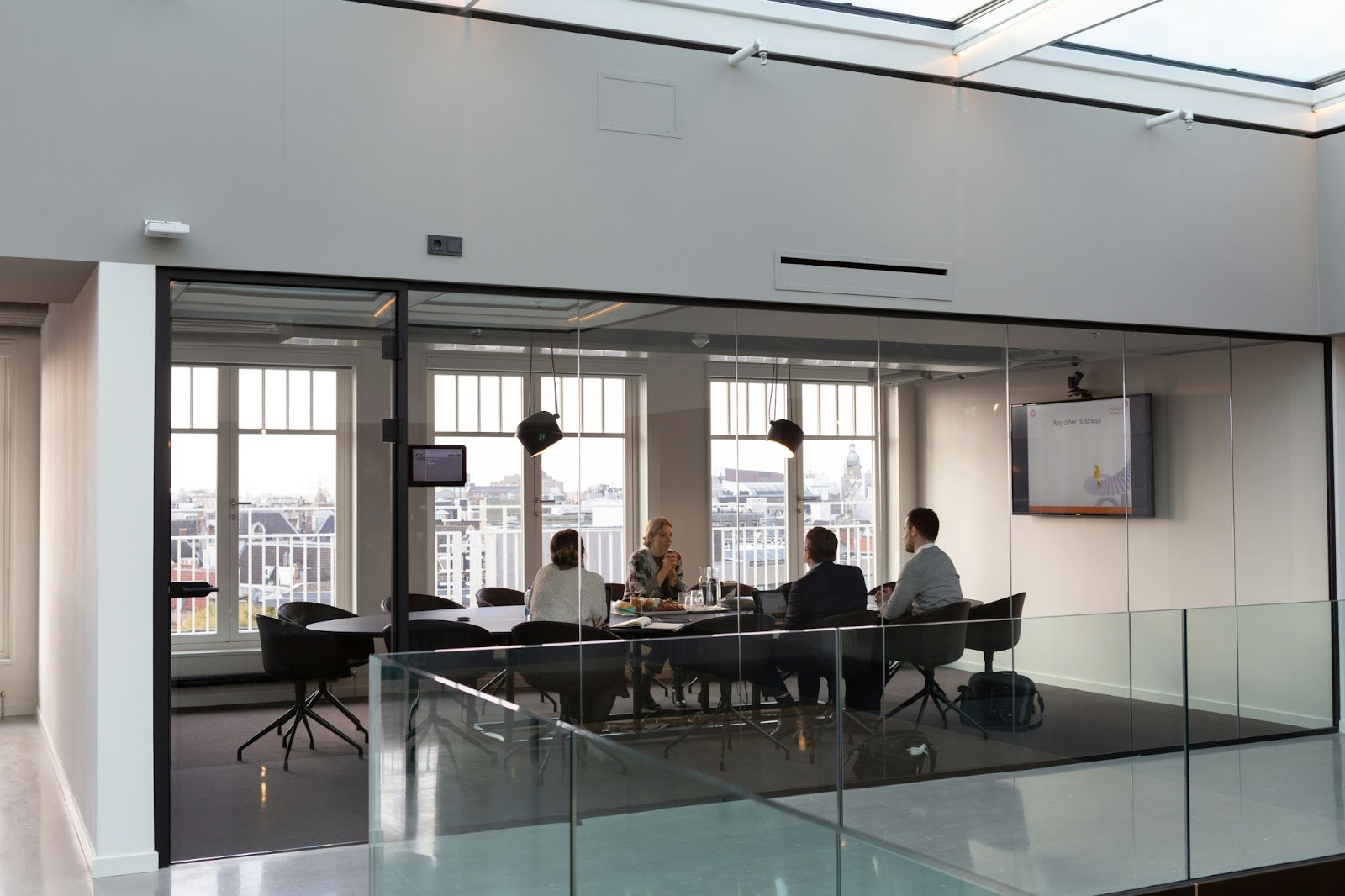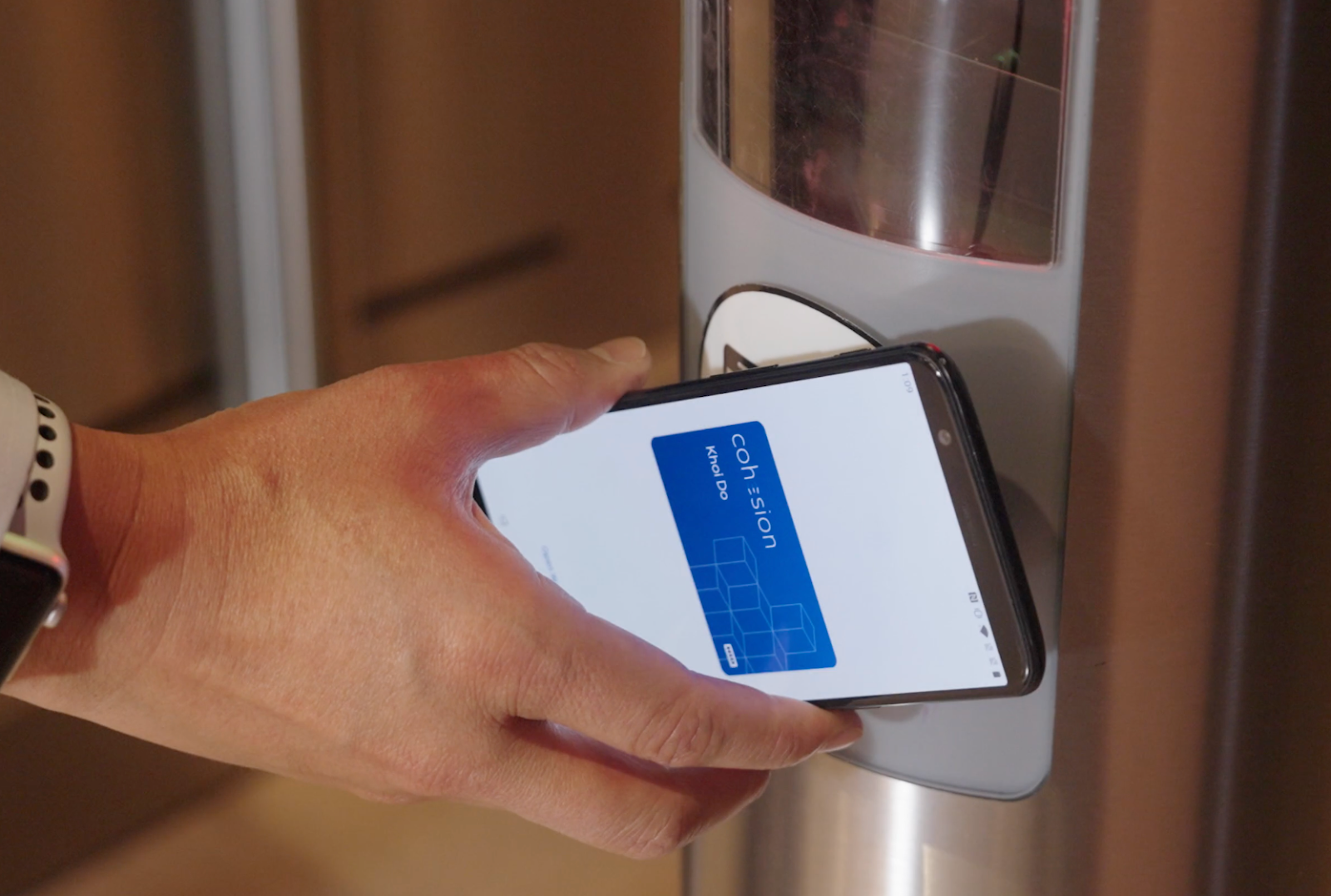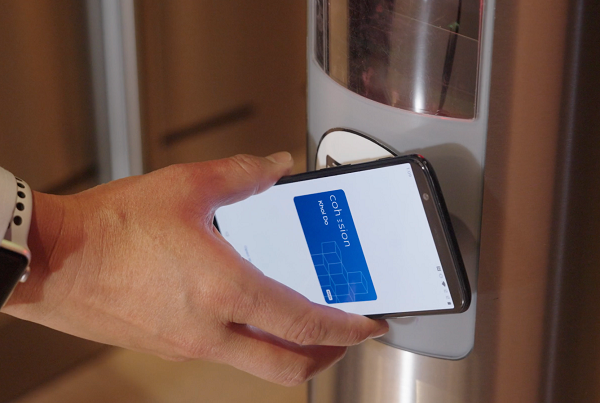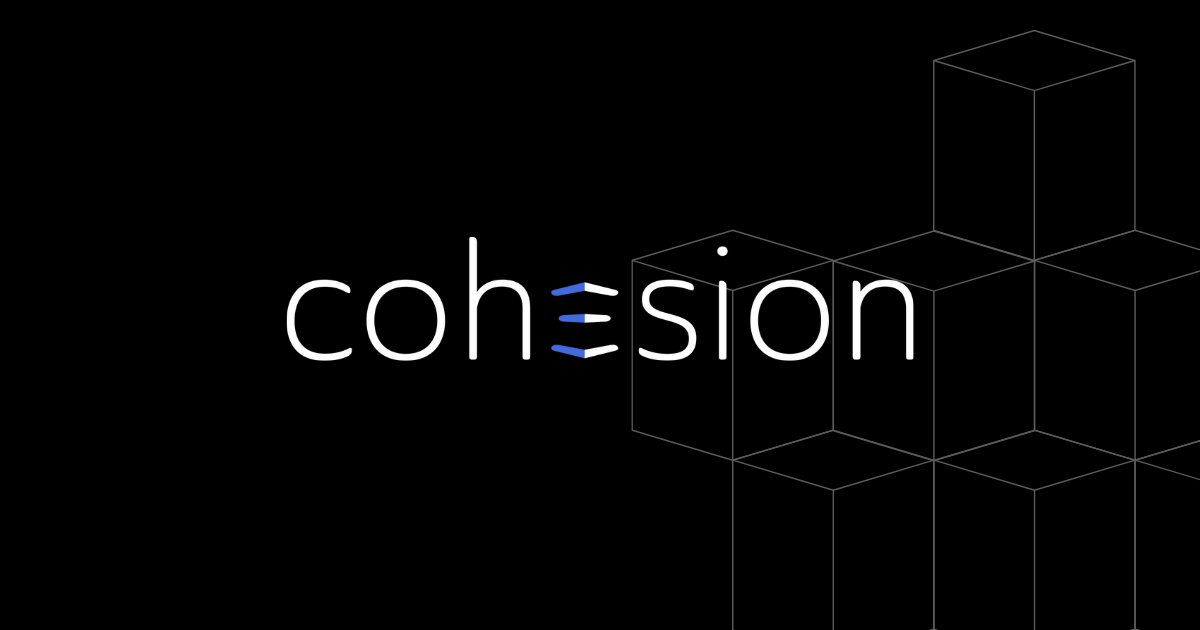A positive employee experience is no longer a perk; it's a core business objective. Companies with engaged teams see 23% higher profitability and 43% lower turnover, according to SPS Global. Yet, many enterprise organizations and commercial real estate (CRE) owners struggle to create environments that attract and retain top talent. The key lies not just in policy, but in the physical and digital space itself. A human-centric approach to employee satisfaction with smart technology can transform a simple office into a responsive, supportive, and highly productive ecosystem.
This guide moves beyond theory to provide a practical framework for CRE owners and enterprise leaders. We will explore how to select, implement, and measure the impact of smart workplace technology, focusing on creating genuine value for your most important asset: your people.

The New Workplace Imperative: Why Employee Experience Matters
The modern workplace is in a state of fundamental transformation. To build resilient organizations, leaders must understand the shifting landscape of employee expectations and the clear financial impact of getting it right—or wrong.
The Evolution of Employee Expectations
Today's professionals expect more than a desk and a paycheck. They seek flexibility, purpose, and a work environment that actively supports their well-being and productivity. This includes the technology they use daily. Clunky, disconnected systems create friction and frustration, while intuitive, integrated platforms signal that an organization values its employees' time and effort.
The High Cost of a Poor Employee Experience
A negative employee experience has direct and measurable costs. Disengaged workers lead to higher rates of absenteeism, lower productivity, and increased turnover. As noted by SPS Global, businesses with highly motivated teams see a 43% reduction in employee turnover—a critical saving in a competitive talent market. Ignoring the daily friction points within your building is a risk few can afford.
The Business Case for Smart Workplace Technology
Investing in the employee experience is not an expense; it's a strategic investment in your bottom line. Research shows that smart technology has a significant positive effect on employee well-being and learning performance. In fact, a study published by Psico-Smart found that companies using AI in the workplace saw up to a 30% increase in employee satisfaction.
By creating more efficient, responsive, and people-first environments, you build a foundation for innovation and growth. This is where integrated technology solutions become a competitive advantage.
The Building Blocks of a Smarter Workplace
To effectively improve the employee experience, leaders must first understand the components of a truly "smart" building and the core pillars that support a modern workforce.
What Is Smart Workplace Technology?
Smart workplace technology refers to a connected ecosystem of hardware and software designed to make buildings more efficient, responsive, and human-centric. It goes beyond simple automation. Key components include:
- Internet of Things (IoT): A network of sensors that collect data on everything from room occupancy and temperature to air quality, allowing the building to adjust to real-time needs.
- Artificial Intelligence (AI) and Machine Learning: Algorithms that analyze data patterns to predict maintenance needs, optimize energy use, and offer personalized suggestions to employees. AI-powered real estate analytics provide the intelligence behind the infrastructure.
- Automation: Systems that handle routine tasks, such as granting visitor access, booking meeting rooms, or submitting maintenance requests, freeing up employees to focus on higher-value work.

The Four Pillars of a Tech-Improved Employee Experience
A successful smart technology plan rests on four key pillars that directly address employee needs.
1. Personalized and Flexible Environments
Employees should be able to control their immediate surroundings. A unified mobile application can allow them to book a desk that suits their work style for the day, adjust lighting and temperature in a meeting room, or find a quiet zone for focused work. This level of control gives people autonomy over their workday.
2. Seamless Access to Services
Friction is the enemy of productivity. Smart technology removes barriers by simplifying daily tasks. This includes:
- Mobile Credentials: Using a smartphone for secure, touchless entry into the building, parking garage, and office suites.
- Amenity Booking: Instantly reserving spots in the gym, conference centers, or wellness rooms.
- Visitor Management: Pre-registering guests who then receive a temporary digital pass for easy access.
By centralizing these functions in a single occupant experience platform, you eliminate the need for multiple apps and keycards.
3. Connected and Collaborative Teams
Technology should bring people together, not isolate them. Smart room booking systems can show which spaces have the right A/V equipment, while employee directories can help new hires connect with colleagues. Building-wide communication tools can also share important updates and community events, fostering a sense of belonging.
4. Data-Driven Insights and Feedback
How do you know if your initiatives are working? Smart technology provides the answer. Occupancy sensors reveal which spaces are most popular, helping you refine your portfolio strategy and office layout. Anonymous feedback tools allow employees to report issues or suggest improvements instantly, creating a continuous loop of communication and refinement.
Your Step-by-Step Implementation Framework
Adopting smart technology requires more than just installing new hardware. A successful rollout is built on a human-centric plan that prioritizes people and process.
A Human-Centric Approach to Workplace Tech
The goal is not technology for technology's sake, but technology in service of people. As Forbes notes, the focus must be on supporting the employee journey. Every decision should be guided by the question: "How will this make our employees' work lives simpler, more productive, and more fulfilling?"
Step 1: Assess Your Current Employee Journey
Before you can improve the journey, you must map it. Talk to your employees. Conduct surveys and focus groups to identify the biggest friction points in their day.
- Is building access a constant headache?
- Is it difficult to find and book a meeting room?
- Do they feel disconnected from company news and events?
Your findings will create a clear roadmap for prioritizing your investment.
Step 2: Choose the Right Technology for Your Needs
Look for a platform, not just a point solution. A unified system that integrates access, amenity booking, maintenance requests, and communications is more valuable than a collection of disconnected apps. Prioritize solutions that:
- Integrate with your existing building systems.
- Offer robust data and analytics.
- Are intuitive and easy for employees to adopt.
- Can scale with your organization's future needs.
Consulting with experts through Smart Building Advisory services can help you select a technology stack that aligns with your specific goals.
Step 3: Master the Art of Change Management
The best technology will fail if no one uses it. A proactive change management plan is critical.
- Communicate Early and Often: Explain the "why" behind the new technology—how it will benefit employees directly.
- Provide Clear Training: Offer workshops, video tutorials, and drop-in support sessions.
- Recruit Champions: Identify enthusiastic employees who can act as ambassadors and help their peers.
Step 4: Measure What Matters
To prove the value of your investment, you must track key performance indicators (KPIs) before and after implementation.
- Adoption Rate: How many employees are actively using the new platform?
- Employee Satisfaction: Use pulse surveys to measure changes in satisfaction scores.
- Operational Efficiency: Track reductions in maintenance ticket resolution times or energy consumption.
- Space Utilization: Use data from data-driven buildings to understand how spaces are being used and optimize your real estate footprint.

Smart Technology in Action: Real-World Success
Leading companies are already seeing remarkable results from their investments in the employee experience.
Case Study: Adobe Boosts Satisfaction by 25%
Adobe implemented a comprehensive employee experience management framework to better understand and respond to worker needs. By using technology to gather feedback and personalize interactions, the company saw a 25% increase in overall employee satisfaction, as reported by Psico-Smart. This illustrates the power of using technology to listen and react to the voice of the employee.
Case Study: IKEA's Strategy for a Connected Workforce
At IKEA, the challenge was to create a stronger sense of connection and purpose among its vast workforce. The company introduced digital feedback and storytelling workshops. The result? 90% of participants reported feeling more connected to their roles and the company's mission. This shows that technology can be a powerful tool for building culture and community.
The Future is Smart and Human-Centric
The integration of technology into the workplace will only deepen. We are moving toward predictive, hyper-personalized environments where the building anticipates employee needs. However, the guiding principle remains the same: technology is the tool, but the human experience is the goal.
By focusing on a human-centric framework, CRE owners and enterprise leaders can build workplaces that are not only intelligent but also inspiring. These are the environments where people want to be, where they do their best work, and where businesses thrive.
Frequently Asked Questions (FAQs)
1. What is smart workplace technology?
Smart workplace technology is an integrated system of software, sensors (IoT), and automation that connects a building's core functions—like access control, climate, and room booking—with the people inside it. The goal is to create a more responsive, efficient, and seamless employee experience through a centralized platform, often accessible via mobile app.
2. How does technology improve employee satisfaction?
Technology improves employee satisfaction by removing daily friction points. It simplifies tasks like entering the building with Smart Access solutions, finding and booking a meeting room, or reporting a maintenance issue. This gives employees more control over their environment and frees up their time for more meaningful work, leading to higher job satisfaction and productivity.
3. What is the ROI of improving the employee experience?
The return on investment is significant and multifaceted. Financially, it includes reduced costs from lower employee turnover (up to 43% lower) and increased profitability (up to 23% higher) from more engaged teams. Operationally, it includes cost savings from optimized energy use and more efficient space utilization, identified through platforms that streamline maintenance operations and analyze usage data.
Ready to build a workplace where people and potential thrive? Cohesion's platform connects people, places, and the planet to accelerate resilience in every building.
Contact our experts today to discover how our integrated solutions can transform your employee experience.





























